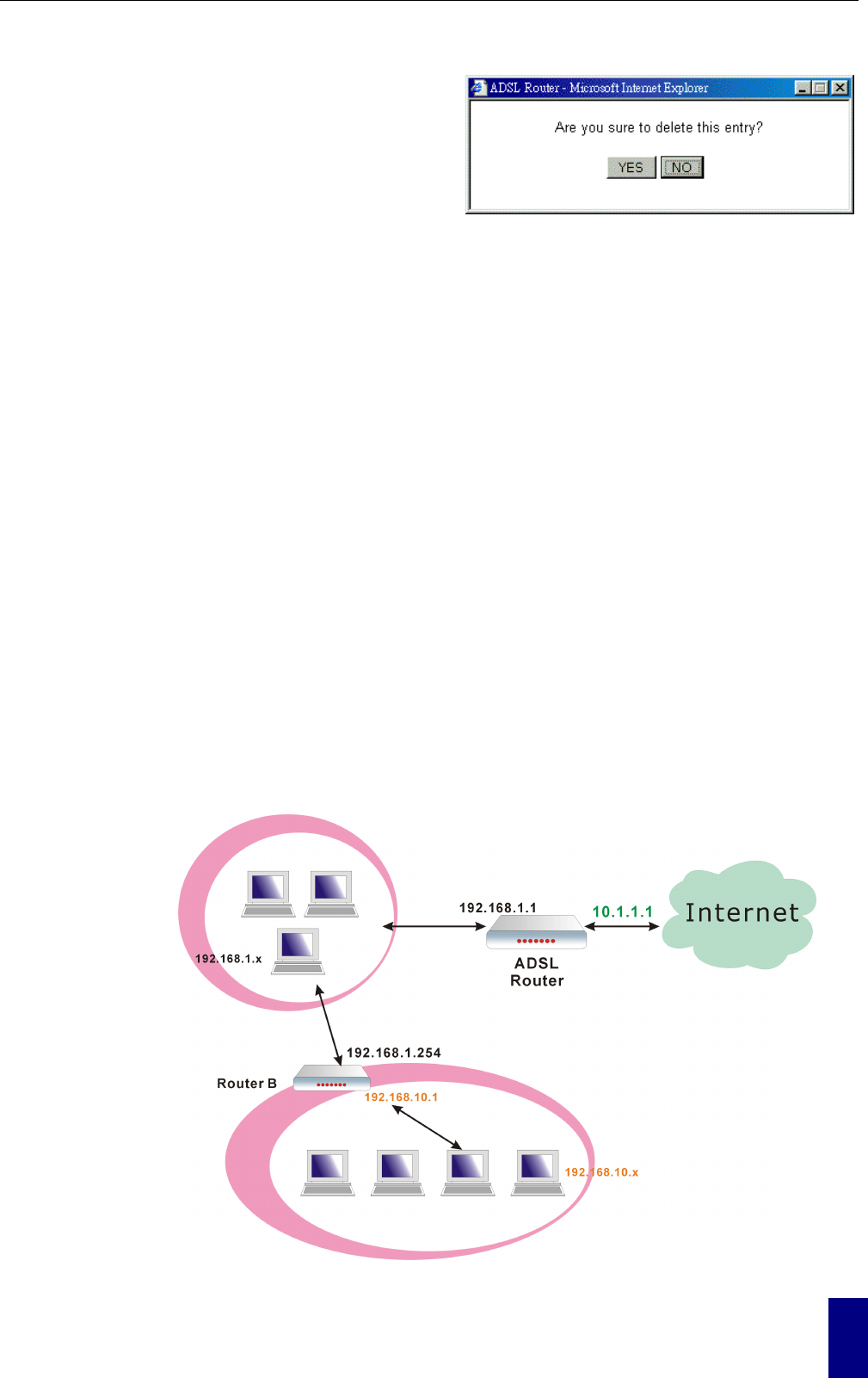
Chapter 4: Web Configuration
41
A dialog appears to ask you to confirm the
action. Click Yes to remove the static route,
or click No to keep the setting.
Configuring Other Routers on Your LAN
It is essential that all IP packets for devices that are not on the local LAN can be passed to the Router,
so that they can be forwarded to the external LAN, WAN, or Internet. To achieve this, the local LAN
must be configured to use the Router as the default route or default gateway.
Local Router
The local router is the Router installed on the same LAN segment as the Router. This router requires
that the default route is the Router itself. Typically, routers have a special entry for the default route.
It should be configured as follows.
Destination:
Normally 0.0.0.0 but check your router documentation.
Subnet Mask:
Normally 0.0.0.0 but check your router documentation.
Gateway:
The IP Address of the Router.
Other Routers on the Local LAN
Other routers on the local LAN must use the Router’s Local Router as the Default Route. The entries
will be the same as the Router’s local router, with the exception of the Gateway IP Address.
For a router with a direct connection to the Router’s local Router, the Gateway IP Address is
the address of the Router’s local router.
For routers which must forward packets to another router before reaching the Router’s local
router, the Gateway IP Address is the address of the intermediate router.
Example – Static Route
Here provides you an example of Static Route.


















